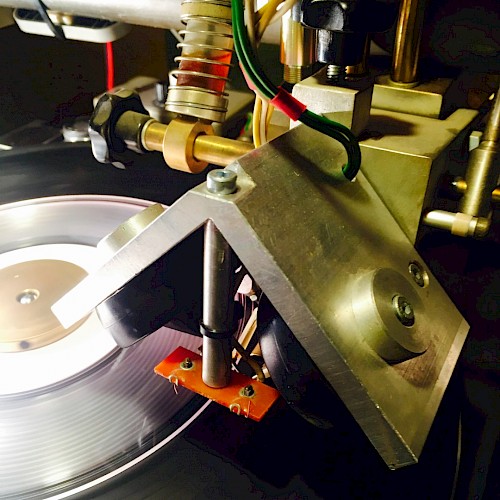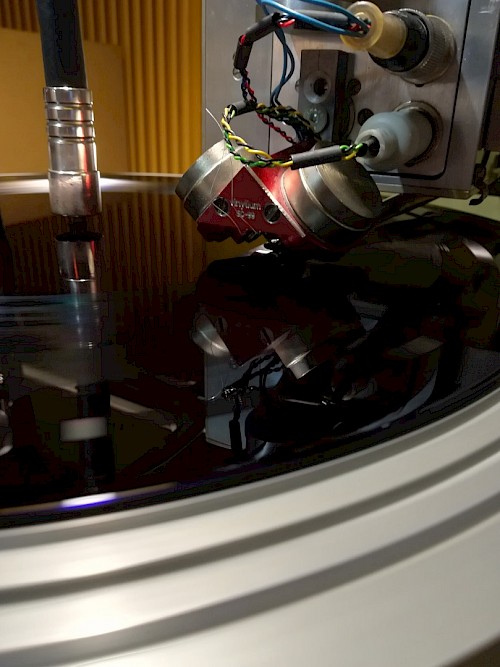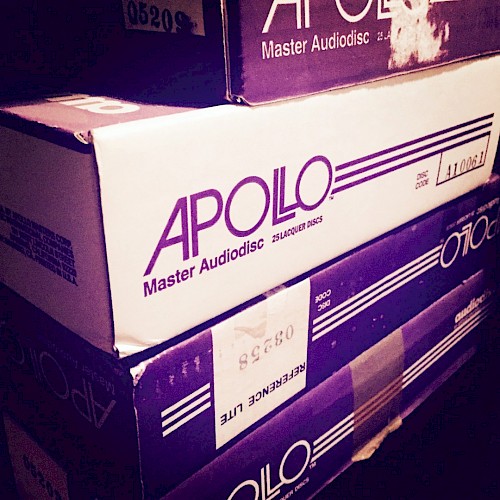Starting at a minimum of 100 pieces the production takes place in a vinyl pressing plant. As a rule of thumb a pressing with a minimum of 100 pieces is profitable, since the necessary manufacturing processes are complex and costly. This process is divided in several sections. When pressing less than 100 records (if offered), the unit price rises enormously.
step 1 : manufacturing of the "Master Disc"/lacquer disc
The audio information is cut on an aluminum disc which is coated with an acetate lacquer layer in real time with a cutting lathe. All later made vinyl are identical copies of this "Master Disc"!
Here you can find prices and information about Dr.Dub's lacquer masters.
step 2 : galvanizing process for stamper production
The lacquer master is being sprayed with a layer of Silver Nitrate and then gets placed in a special electric bath. By the addition of nickel and electric current which flows through the pool, the nickel deposits on the silver of the lacquer master. After some hours this new negative layer is ready for pulling off, the result is a "mirror image" of the Master Disc, called "Stamper" or "Father" which is necessary for the next step. After this process the lacquer master is defective / useless. (Sometimes a "mother" / positive is being formed again from the first "father" which gets engraved and archived to be able to produce additional stampers after several years).
step 3: Pressing process with stamper and pressing machines
A stamper serves to press 500-1000 pieces of vinyl until it's worn out. In mechanical / hydraulic press machines, a stamper for each side of the vinyl (A+B) is being clamped into the pressing machine (top and bottom). Vinyl granules are placed in the form of a puck (also called vinyl-cake) with the labels in the middle between the two stampers and pressed together with high temperature and force. Overlapping material gets removed and the vinyl is ready for cooling. In a few minutes, a large number of vinyl copies can be produced.
Galvanization and pressing of your vinyl pressings at Dr.Dub is carried out by selected partner pressing plants in Germany.




